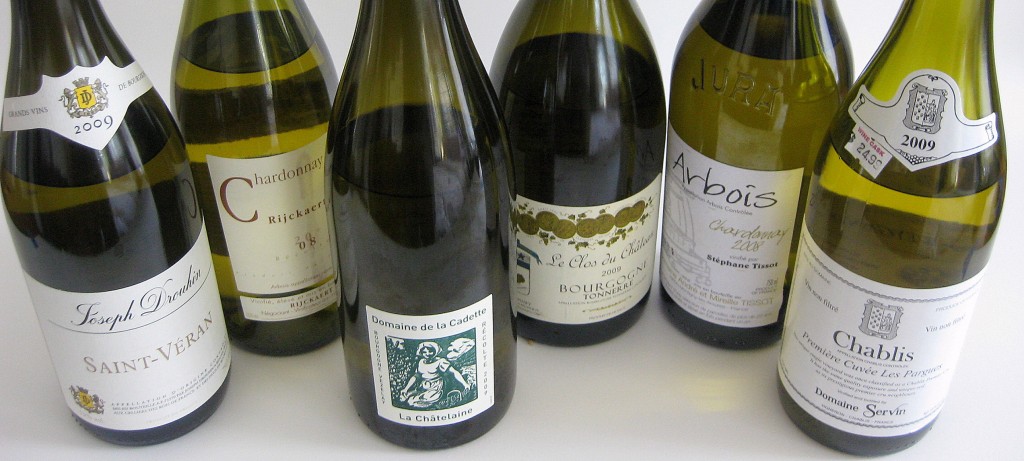 IT’S WHERE THE EVERYDAY meets the can-you-believe-it that most interesting things happen; where risks and rewards run high; where people who know better (or think they do) often fear to tread. It’s true of all sorts of things – including wine.
IT’S WHERE THE EVERYDAY meets the can-you-believe-it that most interesting things happen; where risks and rewards run high; where people who know better (or think they do) often fear to tread. It’s true of all sorts of things – including wine.
We offer chardonnay as a case in point. In warmer climes and at lower latitudes this varietal can prove dull stuff indeed, but set it down at the very verge of where wine can be made and you often get something altogether different and far more appealing. In Europe the possibilities for winemaking peter out as you approach 50 degrees of latitude, yet it’s in these barely vine-tolerant latitudes that some of the world’s greatest chardonnay is vinified.
The French have more high-latitude vineyards dedicated to chardonnay than anyone else, having long ago discovered the grape’s affinity for the cool. Roman physicians in the age of Augustus who first encountered this leaner, lighter, drier, northern kind of wine said it possessed austeritas (severity). Today, you’re more likely to hear it described as brisk, racy, or precise.
Extreme chardonnay, as we like to call it, and the techniques that throw its character into high-relief, likely have their origins in medieval Burgundy, and the varietal still dominates white wine production there. Dijon, at more than 47 degrees of north latitiude, and Lyon, at close to 46 degrees, roughly mark the north-south limits (in North America, mid-state Minnesota).
Roman physicians in the age of Augustus who first encountered this leaner, lighter, drier, northern kind of wine said it possessed ‘austeritas’ (severity).
Somewhat to the west lie the vineyards of Chablis, where thrives a chardonnay so pure, high-strung, and gifted with minerality that it might well serve as the model to which all extreme chardonnay aspires.
You get the same spine-tingling verve farther west in Champagne (just under 50 degrees), where an all-chardonnay blend is known as a blanc de blanc, and again close to the Swiss border in the Arbois appellation of the pre-alpine Jura (47 degrees) where chardonnay lives alongside more localized varietals.
It’s characteristic of this austere style that oak-influence, when present, will be experienced as a subtle volume-enhancing rounding-out, rather than anything overtly woody. Winemakers in these parts aren’t that interested in putting some sort of New World happy face on what they make. And that, you see, is the whole point. It’s what makes extreme chardonnay a delightfully chilling prospect just as summer heat reaches fever pitch.
Maison Joseph Drouhin Saint-Veran 2009 Simple, crisp lemon-tinged fruit with modest mineral notes. Nicely firm and toned. Low price, high-value introduction to the category. Around $14.
Rickaert Arbois Chardonnay 2008 Emphatically minerally aromas; taut, almost puckery, acid structure; firm, sustained fruit element; a scant 13 percent of alcohol gives this an appealingly airy, mountaintop quality. Around $17.
Vignoble Dampt “Le Clos de Château” Bourgogne Tonerre 2009 Ripe, fulsome apple-pear fruit is firm and snappy; some subtle and somewhat unusual mineral notes contribute complexity. Verdict: delicious. Around $19.
Domaine de la Cadette “La Châtelaine’’ Bourgogne Vezeley 2009 More wine than you’re expecting, with fruit so crisp it’s almost crunchy – more of a bite than a sip. Lots of geology going on here too – adding layers of interest. A find. Around $24.
Domaine Servin Premiere “Cuvée Les Pargues” Chablis 2009 Not the incisive precision of the 2008, but there’s plenty to like here including an extra dollop of stony-smoky minerality that nicely offsets the richness of the vintage. Textbook Chablis character and very high-value. Around $25.
Originally published in The Boston Globe in July 2011.
Reach me at stephenmeuse@icloud.com
Follow @stephen_meuse